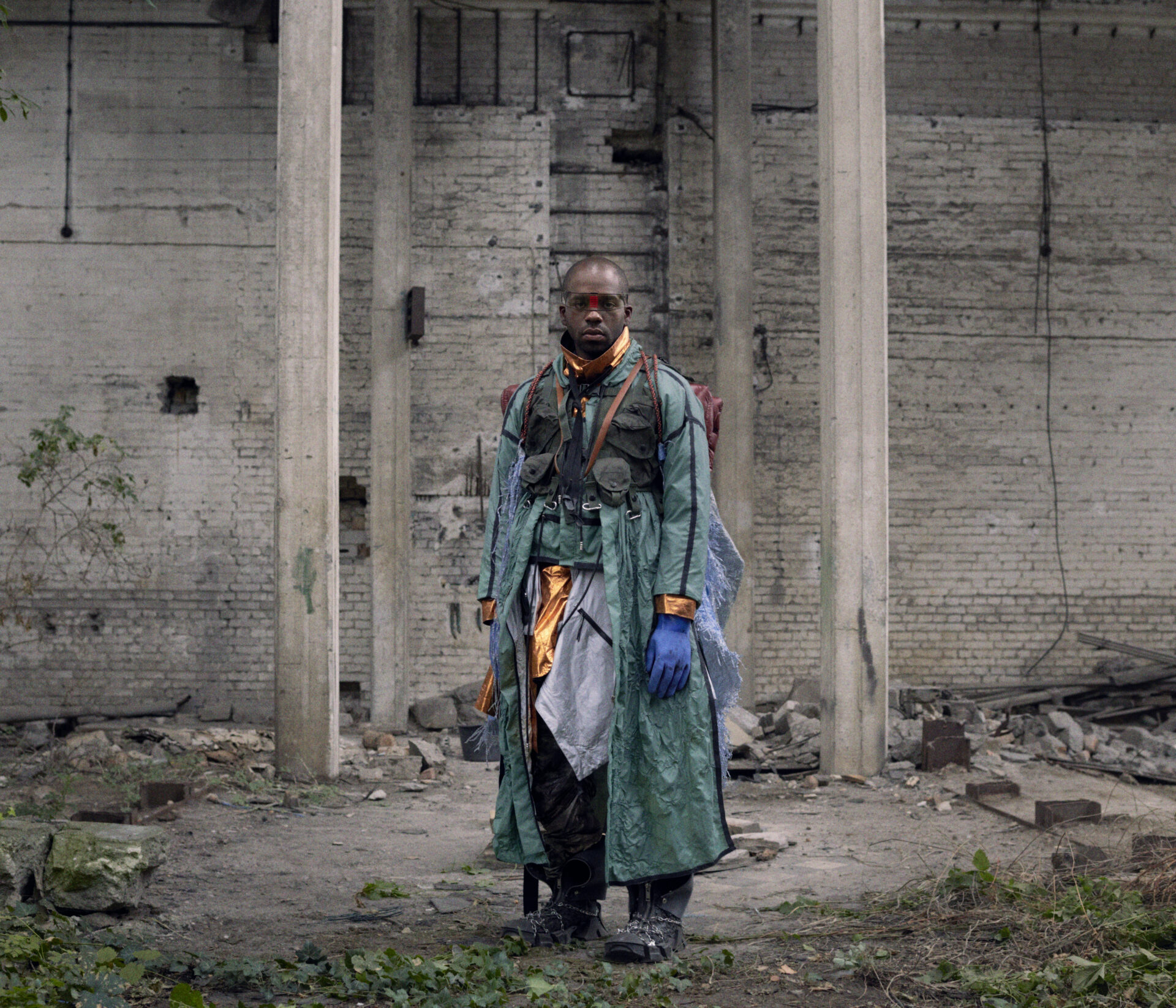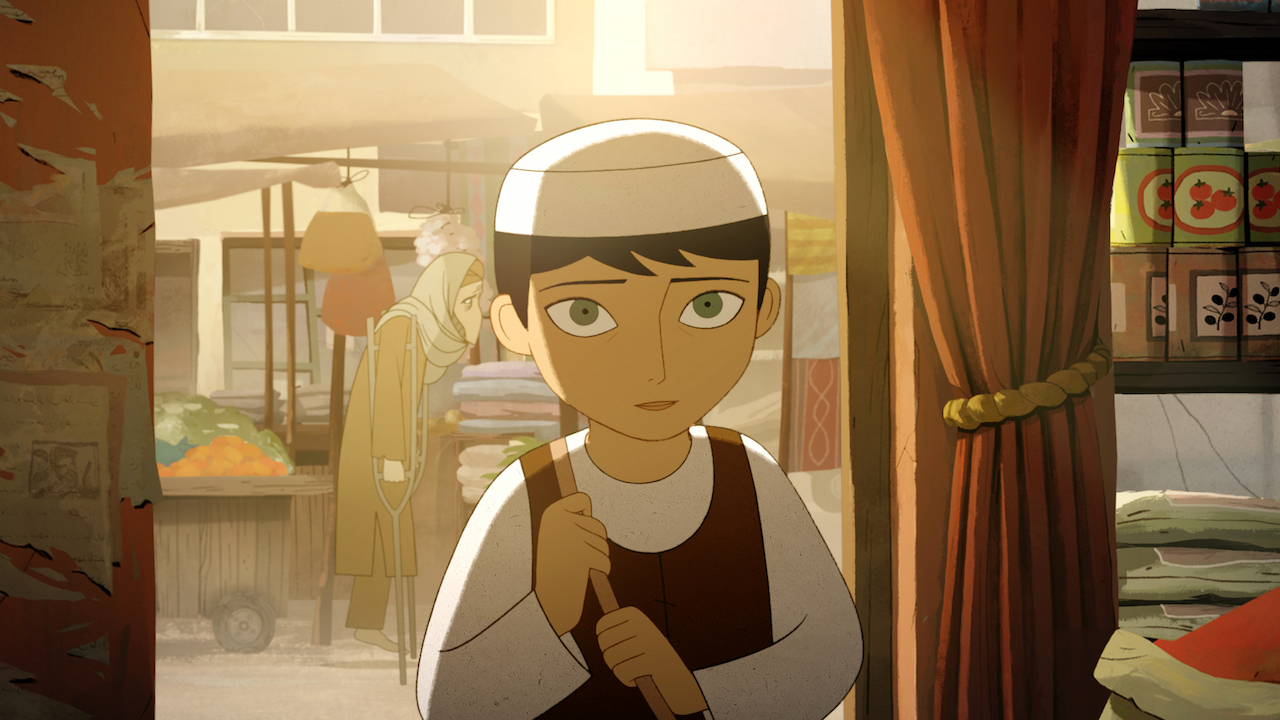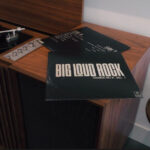“If shit popped off and society had to be rebuilt,” asks Terrell Hines, “how would I do it?”
That’s the question singer/producer Hines begs to ask on his debut EP, St. Mark Rd.
An even split of postmodern and post-apocalyptic, Hines’ St. Mark Rd. is the triumphant birth of an artist that knows there’s nothing he can’t turn into song. It packs a blend of genres and a bulky narrative into just three songs, achieving cohesion through engineering, spoken word-esque acapella raps, mercurial soundscapes, piano riffs, and lyrics tinged with a cry for survival. With St. Mark Rd., Hines draws upon on a bleak narrative and turns it into something freeing. It makes you feel hopeless and hopeful at the same time. It makes your heart swell, takes you back to the times when ’90s R&B was still on the radio. And it’s so short that it demands an immediate relisten.
He’s coming to me via phone from Los Angeles, a day before his debut UK/EU tour with X Ambassadors is announced— and I’ve caught him on a “pretty good day” in his own words. We talk everything about his debut EP, St. Mark Rd. (released October 11, 2019 via Capitol Records)— its influences, its origins, its connections to the tech world, and its lead single, “Get Up” gaining fame after being chosen for the Apple Keynote commercial.
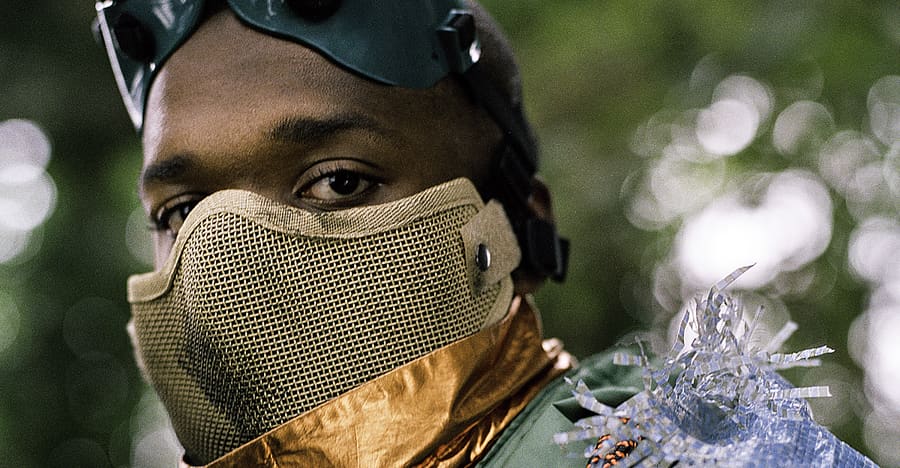 ———
———
The music of Terrell Hines is almost indescribable, and even he and I take turns having trouble describing it. He talks about his creative process as if it’s very basic, but listening to everything he’s created thus far would plead far otherwise. Just as likely to be inspired by socio-political ideology and the science of survivalism as he would be by the limitless potential of technology, Hines takes all of his intense ideas— the overtaxed Earth and crumbling institutions— and wraps them into a feeling of exuberance. Whether it be working with MIT students or working with Beck, Hines sees every musical endeavor as an art project with endless possibilities, so it’s only fitting to assume that the jump from fledgling art project to musical genius happens entirely by his own creative.
Something that he’s been honing since age two, his creative bone, his “musical vocabulary”, as he calls it, has been impacted by a number of influences throughout his life, and they all work in concert on these three songs to produce an atmosphere of organized chaos. “I’m taking all of my [experiences]. I’ve got what I’m seeing in a real world everyday and then I got what I’m hearing in the real world every day, so I took what was going on or things that I’m just into, and I just wanted to combine it all in one thing. So if I’m studying one thing, but there’s a certain thing going on in society, and materials I’m trying to explore at the moment, I put all of that in one track, or in one body of work.”
And indeed, anyone in modern-day America scanning the tracks will hear a heavy emphasis on existential doom and surviving in spite of that, packed behind the mercurial soundscapes and layered production he creates. “Fuck the government cause they never gonna love me/ Everybody everybody everybody running/ Smile to your face but they all want something,” Hines raps before a grandiose chorus, and immediately the song taps deeper into something real, in one line summing up systematic oppression and how that plays out for him as a black man. “I wanted to explore survival What does it mean to survive? What would we have to survive from? What would last? What wouldn’t? And within those facts and this dark space, how do you put some beauty on it?”
A recent Berklee grad, I ask him how the project came together in the context of Berklee. Not too many artists can say their musical creativity was encouraged or even honed in college— usually it’s the other way around: music becomes suppressed in favor of academics, and projects that were once updated daily run dry. But, a hotpot of many different types of musicians, Berklee is the perfect place for an EP to come together, or at the very least, a great place to learn valuable musical skillsets.
For Hines, the latter was true. “My last semester when I was in Boston, I was like, ‘Okay, I know I want to make a project’, but that stuff that I was making in Boston wasn’t the EP. The EP started once I moved to LA. But it wasn’t this thing of like, ‘Oh, I’m gonna make a project’, it was just: ’I want to put together like a crazy conceptual art piece’, and it just so happened to all work out with the music. I was writing stuff all the time, so it was like, ‘I’ve got all of this work’, and then everything kind of started coming together in a cohesive way.”
As it stands now, nothing on St. Mark Rd. came together in the context of college, but among other things, what Berklee did give him was a few technology cards to play. A few days before the interview I was sent the PR material, and while reading the artist bio, his emphasis on survivalism jumped out at me, as did the tidbit that he had collaborated with MIT engineering students as he refined his sound that he’d always intended to be future-facing. This gave me pause for thought— how did Massachusetts Institute of Technology fit into his musical endeavors? “Reading your artist bio, I saw that a part of your influences came from collaborating with MIT students,” I ask, half-expecting him to tell me a story about how an MIT student was featured on one of his songs, swapping real instruments for computer code and using technology to engineer a perfectly-timed track. The real story, though, was far more intriguing. And as for my own imagined answer— Hines just does that himself.
‘When I was in Boston, I did a program, ‘creative entrepreneurship’. It like a ‘trial class’ type of situation, so I was like, I’m going to try it. I didn’t know what it was. It was at MIT, and basically, they take a certain amount of Berklee students and put them in a classroom with students from MIT. It’s like a brainstorming session of ‘Can you create the next instruments? What will instruments look like 20 years from now?’ and also going in and taking apart an instrument and putting it back together— just kind of practical stuff. Being around that environment, I’m like, ‘This is cool. There are no limits to this stuff.’ And then we started learning about sensory technology. things like mood, and how you can apply that to society. [With technology], you can control the mood of a subway station and also pick up data. So to me that was cool. I’m like, now I can engineer something for the future that can be kind of cool. So I apply all of that within the music too.’
There are certainly no limits to technology these days, as are there none to what Hines can do in the studio. “Get Up” for example, sounds like an acoustic R&B number, but slips into a more alt-pop song by the chorus. And as quickly as it does that, it slips back into R&B before breaking into hip hop— all within the first minute. Fruitless as it is to try and pin down a genre for the EP, it’s human nature to try to fit things into categories. So, St. Mark Rd. is: R&B, hip-hop, rap, alt-pop, electro-grunge, shoegaze, microtonal, neoclassical, and eons more. “You just kind of don’t know what genre it is. It can be fifty genres in one track, and it still feels like one cohesive thing.”
But, even with the uncertainty of the spacial soundscapes and the worlds he builds through music, the real magic comes from his home. St. Mark Rd.— the emotions for it— did not come together at Berklee. In fact, it clicked at childhood, long before he knew it did. St. Mark Rd. That’s the first place I remember growing up. Like, you know how you can go back through your young life, your youngest moment? That’s the first place, first environment that I knew. That’s kind of where it all came from, that’s where the real stuff happened. You know how you move around a lot and you go to a lot of different places? I feel like that was like my ground. Like I’m grounded in St. Mark Rd.” It’s only fitting that for his first project, despite it being so nuanced and up in the air, he chose to ground it in his own roots.
“The whole EP itself is like St. Mark Rd.,” he continues. “I’m like, if I can put my emotions inside of the music, kind of what the place gave me, itself, that’s where the energy from St. Mark Rd. is put into the work. But I did it in a way where it’s like, okay, if I want to add a concept artistically, I chose to add the post-apocalyptic concept to the place I’m from and I made it beautiful. That’s how I see it.”
Raised in the woods of central Georgia in a town called Dublin— “the kind of place where you either join the military until you took your leave”, like his dad, “or worked in a factory until it closed”, like his mom— the idea of post-apocalyptic-ness looms large over his influences and his work. From the borderline-existential lyrics of “Living For Today” to the brutalist, geometric visualizer for lead single “Get Up”, Hines is no stranger to unpromising outlooks. But the liberation is in his sound. Turning musical soundscapes into visual landscapes is a huge part of his work, from the way he mentions subway station moods to the way the work is grounded in St. Mark Rd. If he can allow the listener to visualize his experiences of survival in the world, as well as his childhood home on St. Mark Rd., then his work is done. “Get Up” may as well be an ode to surviving government oppression, while “Feel Good”— his favorite on the EP— is an encouraging number about redemption. Quite a jump, but one that emulates the gulf between some of his influences: Joy Division, Marvin Gaye, and Outkast. “It’s like a whole puzzle. I take all my influences… [and] I take all my musical vocabulary, and I’m like, if I can combine that musically— that’s already something cool— and then like you just go back and it’s like trial and error on putting together the projects, because there’s so many different parts to what you’re trying to put together. You’ve got your own music vocabulary. You got the sound of the actual artists that you’re influenced by, and then it’s like, how do I put this together to make a cool body of work?”
A drummer since he was two, he’s a musical polylingual whose as fluent in hip-hop and R&B, as he is in grunge, garage rock, post-punk, blues, soul, and southern funk— a world-builder with a voracious mind and musical influences that span well beyond his years. Growing up, his father always had something classic playing, and his mother sang in a gospel group called the Spiritualettes, so it’s no wonder Hines has a lot to work with when it comes to blending genres. “I listen to so much music. Growing up, I listened to a lot of old records. Anything that was from ’74 to ’78” — specifically ‘I Want You’ – Marvin Gaye (1976), ‘Superman Lover’ – Johnny Guitar Watson (1976), ‘Off the Wall’ – Michael Jackson (1979), to name a few— “that was my musical vocabulary all the way up to like high school— or going to college.”
I press on about Berklee, and he happily obliges. After all, it was his first time living in a big city, his first time reading case studies about how our brains and bodies process sound— and his first time being at arms length with a lot of music styles that not a lot of artists start out having been exposed to. He has a leg up. It’s is an idea that Hines himself hints at: “Berklee is a place where 80% of the school is international. So you’re in a bubble where it’s all creative people from all over the world, and you’re just in contact with any type of culture that you want to learn about. It’s there. So musically, I was just always into other stuff. I studied a lot of microtonal music at Berklee, so that influence alone, and me being a drummer, like applying it to this art, there’s possibility, that’s kind of where like the project found itself.” I come right out and ask: Any experiences at Berklee influenced you? “Yeah, the entire time being at Berklee.”
Knowing that his work thrives on being able to experiment and explore, I’m curious to know if he still feels he has like the same amount of creative freedom, now that he’s been signed to a label and thrown somewhat into the public eye. I hold my breath, knowing Capitol is listening on the other line, but creativity is as integral to Hines’ future work as it was to the flawless execution of St. Mark Rd., so I feel justified. Again, my own assumptions get ahead of me; half-expecting him to break into a gusher about how his sudden fame had hampered his creativity, I listen intently on the other line.
“Honestly it’s still kind of the same. My process hasn’t changed. Everything around me might be changing, but the creative process, that doesn’t change. So it’s given me more creative freedom to do more stuff and explore, honestly. But I’m so [kept] to myself. I’m out of the way. I’m only doing creative stuff. Thats all I do.”
The above question really comes because he’s recently been recruited to work with Beck on his new ‘Hyperspace’ record— he’s featured on the title-track— a new collaborative album with Pharrell Williams, featuring Sky Ferreira and Coldplay’s Chris Martin. It’s his first big songwriting credit, and sees him thrown in the studio with a lot of the big guns. But Hines is never one to be phased.
“Like I said, the process doesn’t change, so everything feels just like an art project. So like working with Beck or doing something with another artist, it just feels like a collaboration with a cool artist,” he says, sounding a little more excited that he’d like to let on. “It’s like, ‘Oh, we just going to work on an art project. Like that feels the best, you know?”
Before we know it, it’s time to wrap up the interview before we’ve barely got into it, but not before a last, rapid fire question. “What’s your favorite lyric on the EP?”
“Do what makes you feel good,” he answers. We laugh because he’s doing just that.
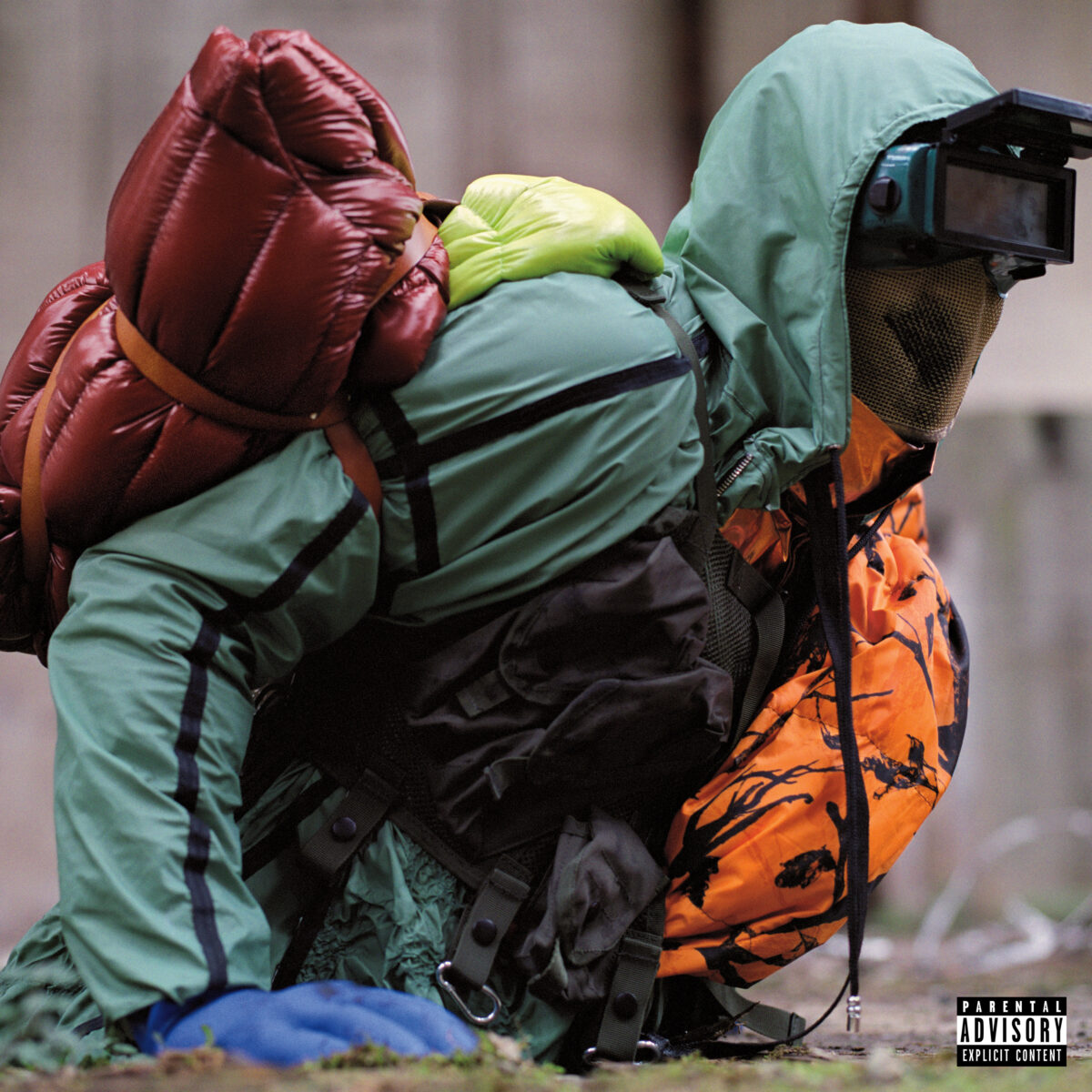
Terrell Hines’ studio debut, ‘St. Mark Rd.’ is out now via Capitol Records. He’s headed on a UK/EU tour with X-Ambassadors in the spring, dates here.

